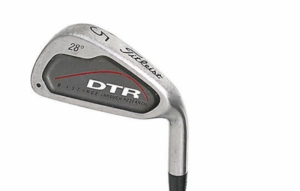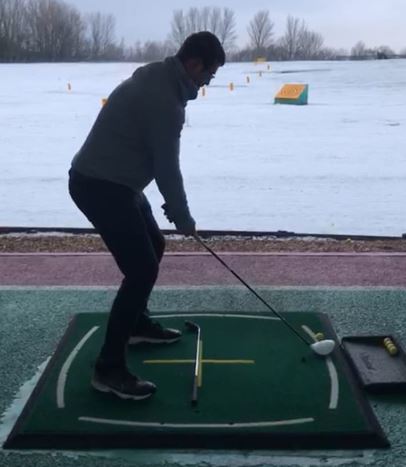Titleist DTR Irons Review? Still Good And Forgiving for High Handicappers?
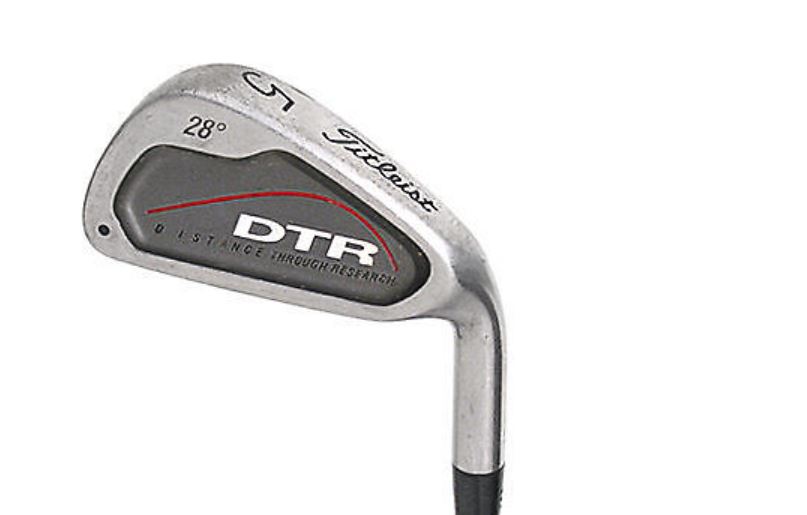
“The Titleist DTR irons were produced from 1987 to 1993. In that era, they were considered one of the best game improvement iron sets on the market.”
When I researched the Titleist DTR irons, I was really surprised that they were game improvement irons that were regarded so highly.
Granted, I don’t have any experience with the Titleist DTR irons and have little experience of Titleist clubs from that era in general.
But I’ve always perceived Titleist to be a company that only recently got into the game improvement, well, game.
So you can imagine my surprise when I read so many accounts of people extolling the Titleist DTR irons as superior GI irons.
I was really eager to get these clubs in for testing and see if my worldview would be rocked by them.
Can old Titleist irons really be forgiving for high handicappers? Read on to find out.
Are Titleist DTR Irons Still Good?
“By today’s standard, the Titleist DTR irons have a pretty simplistic design and basic technology.”
But I can imagine the Titleist DTR irons turning heads in their era. First off, these are deep cavity backs. I mean, really deep.
You can eat your cereal out of them. But there is a mass in the toe that I imagine was placed to catch toe-side mis-hits.
The Titleist DTR irons also feature a deep notch at the base of the hosel where it meets the toe.
I’m told that the deep notch was included to help reduce the overall weight of the head.
When I first gave these irons a few test swings, they didn’t feel as light as say, modern Cobra irons; but they were light enough to grab my attention.
“DTR” stands for Distance Through Research so I was really eager to see what these babies could do at the range.
With the 3-iron, I was averaging a carry distance of 187.6 yards. That may not sound impressive but keep in mind I don’t even carry a 3-iron in my normal bag.
But with an iron I do carry, a 4-iron, I was averaging a carry distance of 179.7 yards – a considerable improvement.
Are the Titleist DTR irons as long as modern distance irons? No.
The fact is that golf club manufacturing tech has advanced a lot in the 35+ years since the Titleist DTR irons were introduced.
But there is still a lot to like about these irons.
Are the Titleist DTR Irons Forgiving for High Handicappers?
“Despite the nomenclature, the best trait of these irons isn’t distance.”
It’s forgiveness. The design is interesting and it didn’t make sense until I got these clubs on the links.
The notched-out joint where the hosel meets the heel in tandem with the weighted toe area creates a better balance at impact.
I found it very easy to hit a nice fade with these irons on almost every swing.
Affecting a near-perfect shot shape with these irons is simple even if you’re a beginner. They fly really high and generate a nice fade.
You’ll be able to get over trees and bunkers with ease while landing the ball close to the pin. The natural fade bias will also help if you tend to hook the ball.
Another design element that makes these irons easy to hit is the pronounced offset.
You can see the offset in both the short and long irons which is a big plus for high handicappers and beginners.
The deep cavity backs also help keep your shots on-target.
I wouldn’t say these are point-and-shoot irons as there is almost always an inherent fade, but the extra weight moved to the perimeter by the deep cavity backs keep your mis-hits in check.
My spin rates weren’t ridiculous on toe/heel side mis-hits and I wasn’t losing much ball speed either.
Catching the bottom lines on the face was understandably detrimental. But I was able to use the rest of the face to produce playable lies.
Titleist DTR Vs Titleist T300 Irons
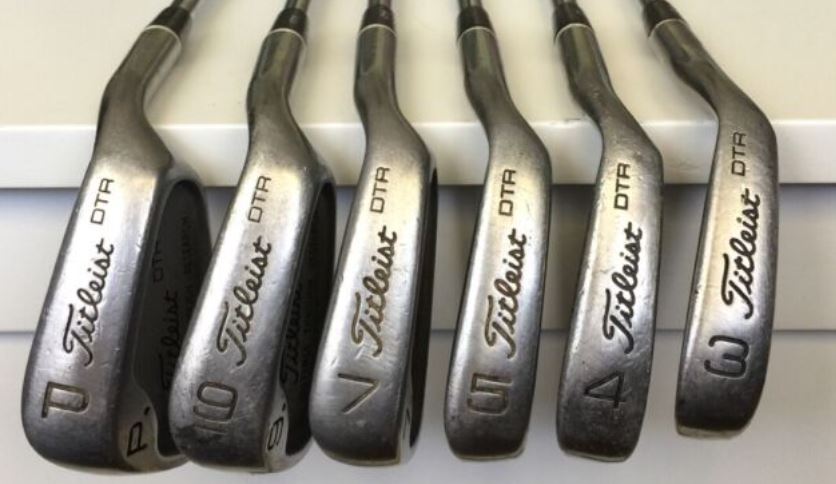
“The Titleist T300 irons generated lower spin overall than the Titleist DTR irons.”
For me, lower spin meant better distance. Instead of 179 yards with the Titleist DTR 4-iron, I was getting 182 yards.
However, I found it a bit harder to hold greens with the Titleist T300’s – even with the 8-iron.
The Titleist DTRs offer shorter distance but better stopping power.
Titleist DTR First Impressions
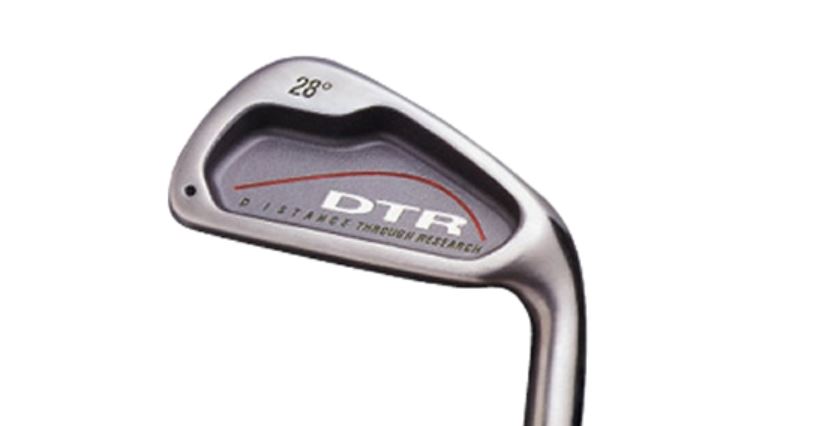
“There isn’t a ton of feel in these irons which was the first thing I noticed.”
They feel a bit clunky and feedback is muted. On the flipside of that though, they feel very solid at impact.
The lack of feedback isn’t great for high handicappers but there is enough forgiveness in these irons to make up for that.
Titleist DTR Selling Points
- Deep cavity back
- Notched hosel joint
- Balanced head design
- Toe-side forgiveness
- Pronounced offset
- High launch
Titleist DTR Key Technology
Notched Hosel Joint
The notched hosel joint saves weight in the heel to create a more balanced feel. It also helps to impart a slight fade bias to these irons.
High Launch
The Titleist DTR irons are pretty weak-lofted which means they produce high launch. This makes them a viable choice if you struggle to get the ball in the air.
Toe-Side Forgiveness
The little bit of extra mass in the toe area keeps spin down and ball speed up on common types of mis-hits.
Titleist DTR Loft & Lie
| Club | Loft (degrees) | Lie (degrees) |
| 1-iron | 17 | 56 |
| 2-iron | 19 | 57 |
| 3-iron | 22 | 58 |
| 4-iron | 25 | 59 |
| 5-iron | 28 | 60 |
| 6-iron | 31 | 61 |
| 7-iron | 35 | 61.5 |
| 8-iron | 39 | 62 |
| 9-iron | 43 | 62.5 |
Who Should Buy the Titleist DTR Irons?
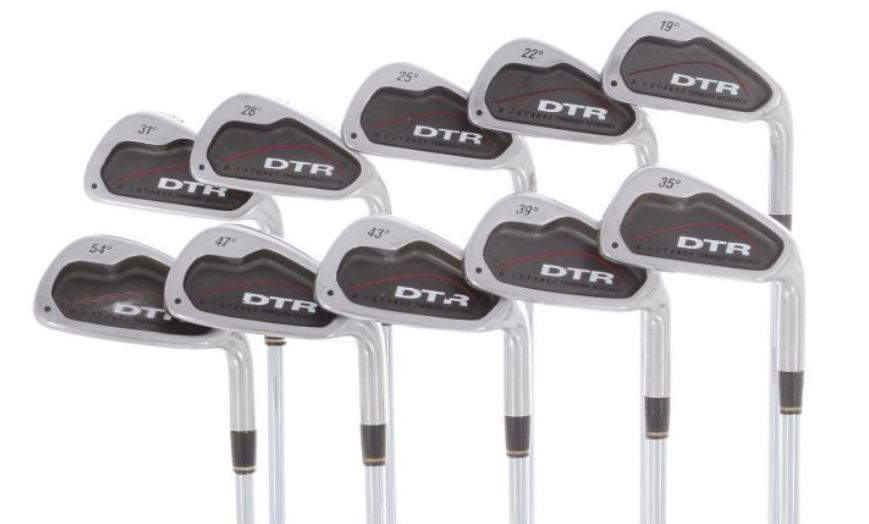
“Despite their age and the lack of modern technology, the Titleist DTR irons would still be good for players trying to break 100.”
Yes, you will definitely have to replace them with a more advanced set post-100; but the Titleist DTR’s are still forgiving irons for high handicappers.
In fact, in terms of straight forgiveness, the Titleist DTR irons hold up against modern GI irons…just not in the distance department.
Distance: 94/100
Forgiveness: 97/100
Workability: 93/100
Overall Performance: 95/100
Value: 95/100
